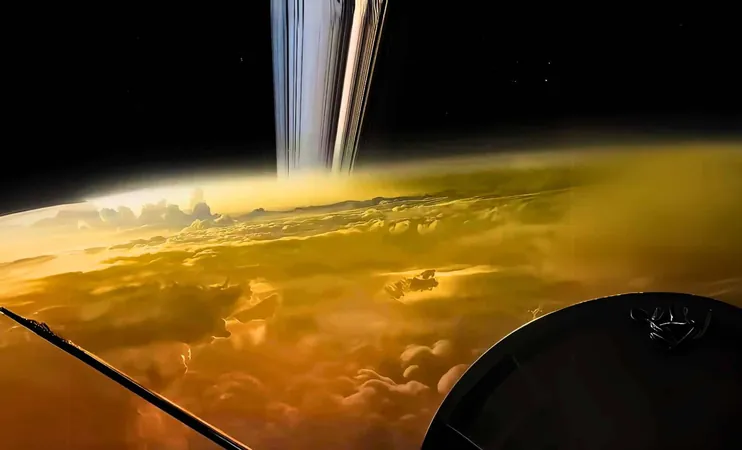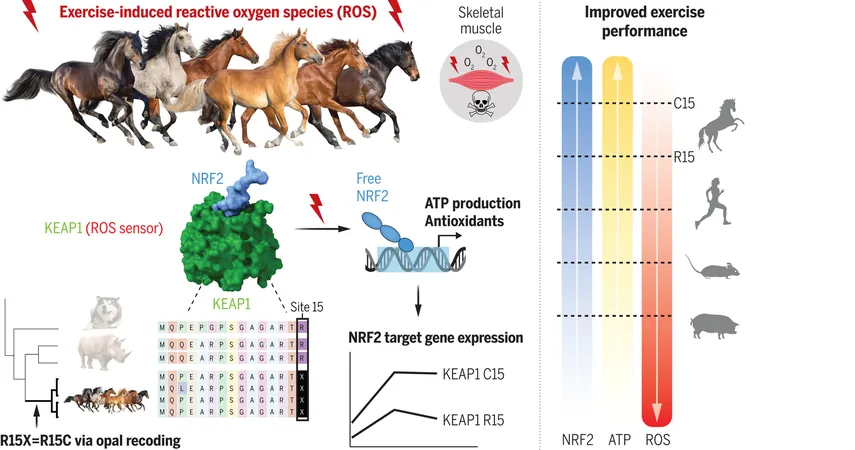
NASA Sets the Record Straight on Viral 'Last Photo' of Cassini’s Descent into Saturn
2025-03-30
Author: Siti
The Fascinating Journey of Cassini
Launched in 1997 by NASA in collaboration with the European Space Agency (ESA), the Cassini–Huygens mission marked a monumental achievement as the first spacecraft to enter orbit around Saturn, reaching the planet in 2004. Over a stellar span of nearly 13 years, Cassini unraveled the mysteries of Saturn’s extensive rings, its moons, and its magnetosphere, accumulating incredible scientific data along the way.
The mission reached its grand finale on September 15, 2017, with a detailed and intentional plunge into Saturn’s atmosphere. Dubbed the 'Grand Finale,' this spectacular conclusion was meticulously planned to safeguard potentially habitable moons, such as Enceladus and Titan, from any contamination.
During its last phase, Cassini executed daring orbits between the planet and its innermost rings, collecting invaluable scientific observations.
Dissecting the Viral Image: Artistic Interpretation vs Reality
Recently, a TikTok video boasting over 6.4 million views claims to showcase Cassini’s “last image” before its destruction. The clip describes it as a color-enhanced monochrome shot taken from roughly 639,000 kilometers away, featuring Saturn illuminated by sunlight reflected off its icy rings.
However, in a surprising turn, NASA has disclosed that this image is not an actual photograph. Instead, it is a digital rendering crafted by artists at NASA’s Jet Propulsion Laboratory (JPL-Caltech), depicting an artistic interpretation of Cassini’s descent based on available data.
While the rendering made its way onto NASA’s website, it was never intended to be portrayed as an authentic photograph taken by the spacecraft’s instruments.
Real Snapshots from Cassini’s Last Moments
While the viral image is undeniably mesmerizing, it is essential to acknowledge that Cassini did capture genuine, albeit less dramatic, images in its final moments. These monochrome images showcased Saturn’s cloud tops and atmosphere, providing valuable scientific insights despite their less glamorous nature.
Cassini’s concluding photograph was taken mere hours before its impact, depicting an unadorned section of Saturn’s atmosphere. The mission officially concluded when the signal was lost at 7:55 AM EDT on September 15, 2017.
Navigating Misinformation in the Digital Age
The rapid dissemination of the misleading image illustrates the profound influence of visual media and the alarming speed at which misinformation can spread. Many users accepted the video at face value, leading some to clarify its inaccuracies.
“The truth is out there. There is a photo taken by Cassini as it was falling into Saturn. This is NOT that photo. This is an artist's interpretation,” one viewer pointed out. Another remarked, “While not the real image, it’s still beautiful.”
Such misrepresentation highlights the critical need for effective science communication in our current social media landscape.
Cassini: A Legacy that Inspires
Despite the mix-up surrounding the viral image, Cassini's legacy remains intact. Over its nearly two decades of service, the spacecraft revolutionized our understanding of the Saturnian system, revealing everything from methane lakes on Titan to cryovolcanic activity on Enceladus, and the intricate structure of Saturn’s rings.
The enduring fascination surrounding Cassini, even years after its mission concluded, is a testament to the profound impact of space exploration. In an era dominated by viral content and fleeting impressions, the mission’s true story continues to inspire awe in a world eager for discovery.



 Brasil (PT)
Brasil (PT)
 Canada (EN)
Canada (EN)
 Chile (ES)
Chile (ES)
 Česko (CS)
Česko (CS)
 대한민국 (KO)
대한민국 (KO)
 España (ES)
España (ES)
 France (FR)
France (FR)
 Hong Kong (EN)
Hong Kong (EN)
 Italia (IT)
Italia (IT)
 日本 (JA)
日本 (JA)
 Magyarország (HU)
Magyarország (HU)
 Norge (NO)
Norge (NO)
 Polska (PL)
Polska (PL)
 Schweiz (DE)
Schweiz (DE)
 Singapore (EN)
Singapore (EN)
 Sverige (SV)
Sverige (SV)
 Suomi (FI)
Suomi (FI)
 Türkiye (TR)
Türkiye (TR)
 الإمارات العربية المتحدة (AR)
الإمارات العربية المتحدة (AR)